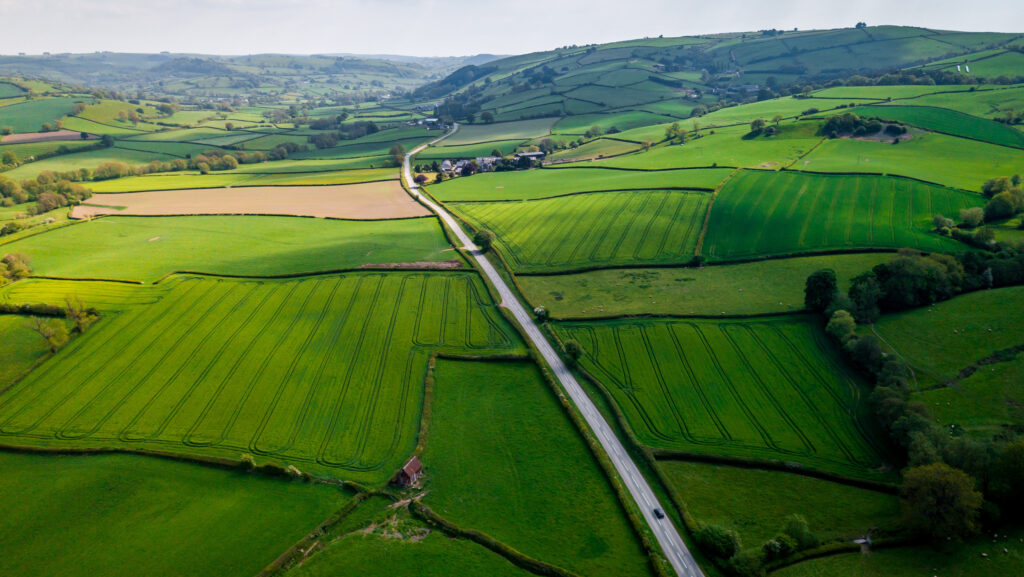Farmland sites on radar of data centre developers
 © istockphoto/kev303
© istockphoto/kev303 Aside from housing, the next big development pressure on farmland is likely to be for data centres.
These warehouses filled with computing infrastructure provide the physical location for storing digital information and the equipment to power web platforms and services, many of which are “cloud” based.
The rapid development and use of artificial intelligence (AI) has ramped up demand for capacity.
Amazon Web Services said last week that it would be investing £8bn over the next five years in building, operating, and maintaining data centres in the UK.
See also: What’s behind the rise in farmland sales in 2024?
Easier planning
Relaxing planning laws is one of the government’s stated policies in its drive to boost economic activity, and data centres are in its sights (see “Planning changes ahead”).
Soon after the election, Angela Rayner, deputy prime minister and secretary of state for levelling up, housing and communities, pledged to make it easier to build laboratories, gigafactories and data centres, along with electricity grid connections.
She will also decide on two data centre planning applications that were refused in Buckinghamshire and Hertfordshire. Data centres are also to be designated critical national infrastructure.
This terms them national assets that are essential for the functioning of society, alongside the existing categories of chemicals, civil nuclear, communications, defence, emergency services, energy, finance, food, government, health, space, transport and water.
Planning changes ahead
The updated National Planning Policy Framework (NPPF) consultation issued on 30 July proposes requiring local plans to identify suitable sites or locations for data centres.
It also asks whether data centres should be listed as types of commercial development that are part of the Nationally Significant Infrastructure Project (NSIP) regime.
This means planning decisions on them would be taken not at local level, but by the secretary of state.

© istockphoto/Andrey Semenov
Power needs
Aside from land, the prime requirements of data centres are large amounts of power and a fast fibre internet connection. They also need large volumes of water for cooling.
The power requirement can be anything from 30MW to 300MW, says Neil Johnson of data centre adviser and project managing real estate firm CBRE.
Farmland sites could bring processing power closer to customers in some cases, he says, in the form of smaller, more bespoke data centres.
National Grid says that data centres accounted for 2.5% of the UK’s electricity consumption in 2022. This is expected to multiply six-fold over the next 10 years.
With the state of the UK’s creaking grid, this presents problems which can sometimes be partially overcome by locally generated renewable power, which also ticks sustainability boxes, say advisers.
Polly Sewell of Bedfordshire and Buckinghamshire land agent Robinson & Hall is working on private wire deals to provide data centres with power from solar projects based on farmland.
Arrangements such as these can often offer a better return than “traditional” solar projects.
Some advisers suggest that farmland sites could have an advantage over others as they could offer better physical security for data centres.
This is due to their locations being potentially less vulnerable targets than those closer to major settlements in times of civil or other unrest.
At Bidwells, planning partner Rob Hopwood says: “There’s a lot of positivity around data centres and some big deals.”
However, the government is playing catch up regarding both grid and planning, he says: “It’s chicken and egg, is it planning first then grid, or connection then planning?”
His colleague Giles Dobson acted for the landowner in a 34ha data centre site near Elstree, Hertfordshire recently and says that the most important consideration is power, with relatively flat land needed, in one block.
Website datacentermap.com lists 367 data centres in the UK, stretching from Aberdeen in the North East to Exeter in the South West and Kent in the South East.
While the pressure for data centre development has been concentrated in the South East, Rob explains they are needed everywhere. “Nothing is out of bounds,” he says.
In some cases, the water and cooling requirement may even be addressed by siting projects underwater, which is being researched.
For many data centres, latency is an issue – this is the amount of time it takes for data to transfer across a network.
Low latency (high speed and low delay) is a pre-requisite in many cases, but less so in others.
Different models
Aside from the data centre services provided to businesses by the giants like Amazon, others serve more local needs, being sited closer to the customer’s own business.
Customers can also buy what is known as co-located space in data centres, effectively renting space in an established, secure location.
An example of this is a site recently launched by German retailer Lidl, which is offering businesses the ability to operate their own IT hardware in two of the group’s data centres.
In its 2024 half-year report, CBRE said that available data centre space in London was at its lowest point in six years, due to high demand.
Also, lack of available power and appropriate land are making it difficult for providers to build new data centres.
Global data centre growth
Farmland is being taken up globally by these operations, with the purchase of more than 364ha in Indiana recently by Microsoft.
A 174ha site was also announced recently in Denmark. This will include heat reuse in greenhouses for vegetable production and heating for local communities.
What makes an ideal data centre site?
- Typically 8-20ha, although far larger developments are underway
- Level ground not prone to flooding
- Fibre connection – the size of many data centre projects justifies bringing fibre in if it is not in place
- Most will require significant grid connection, but the ability to source power locally from renewable sources ticks planning and sustainability boxes
- Ideally near a road where access for construction traffic won’t be an issue
- A Savills’ report says that the development of more so-called “edge” data centres is likely, sited close to the edge of a network, or in less obvious traditional hotspots. These are likely to be deployed across multiple locations which were not previously of interest, says the firm.
- Additionally, the delivery of artificial intelligence (AI) will require huge developments in single sites of more than 40ha to provide up to 300MW. As AI is not latency sensitive in the same way that live cloud services are, it is also largely location neutral, says Savills, leading to deployment wherever there is land and power at scale, for the right cost.
Republic of Ireland
Ireland’s Central Statistics Office says that almost a fifth of electricity used in the country in 2022 was consumed by data centres.
This reflects the fact that some key players such as Amazon, Google and Microsoft have data centres in Ireland, along with many other operators.
According to data centre monitor Baxtel, the Republic of Ireland has 110 data centres, operated by 23 providers.
On some sites, independent gas power stations are being built to address the energy requirement.
